The online education market is growing at a phenomenal pace and is expected to reach $400 billion by 2026.
With the rising demand for online education, many people are seeing a lot of success creating and selling courses online.
On average, course creators make around $68,550/year while top earners make over $115,000/year. But that figure depends on a variety of factors, some of which we are going to look at below.
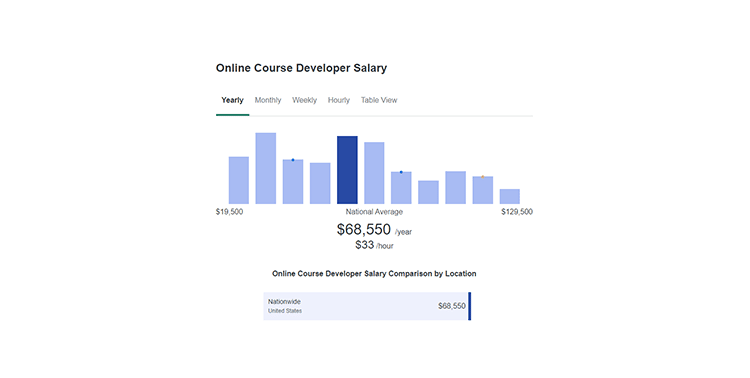
So, how much can you make selling online courses? Read on to discover the answer and a few examples of successful online course creators to draw inspiration from.
Successful Online Course Examples
Below, I share a few examples of instructors who have done well selling courses online and share their income reports publicly.
Example #1: Ron (Me) – OneHourProfessor.com
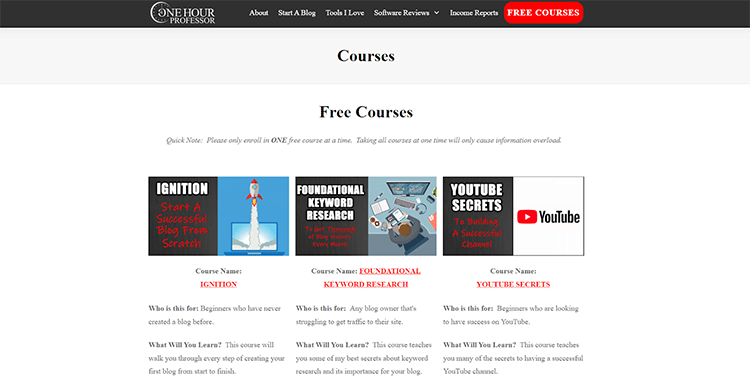
I create courses on how to start a successful blog for beginners who have never created a blog before, as well as courses for blog owners struggling to generate traffic to their websites.
I also offer free foundational courses on topics such as:
- Keyword Research: Discover the importance of keyword research to your blog’s success and why keyword research services are a must-have for getting things done quickly.
- YouTube Secrets: How to create a successful YouTube channel.
- Ignition: How to create your first blog from start to finish.
I share my income reports on my blog as a way to inspire other course creators to explore this lucrative income stream.
Example #2: Pat Flynn – SmartPassiveIncome.com
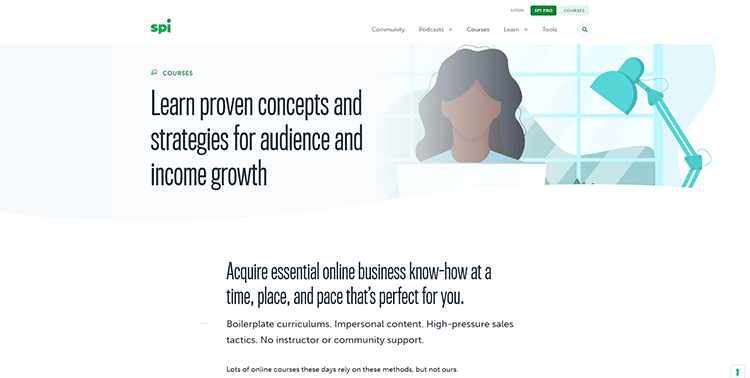
Pat Flynn is yet another online course creator who has found success in providing knowledge to his audience.
He makes a 7-figure income online and his success is mostly attributable to the fact that he is committed to doing things differently than a lot of other course creators in his niche who offer boilerplate curriculums and impersonal content.
He sells online courses spanning a wide range of topics, including:
- Power-Up Podcasting: How to create, launch, and market a podcast.
- A-Z Webinars: A step-by-step roadmap for creating and delivering webinars that work.
- 1-2-3 Affiliate Marketing: Learn the three-step system to generate income for your business with affiliate marketing.
Example #3: Paul Thompson – ThePaulThomson.com

Paul Thompson is a business coach for course creators. His entire business revolves around helping beginner course creators build better courses so they can sell more of them.
He creates his own courses designed to help other creators leverage the Lifetime Student Value in their business in order to scale.
These are just three examples of successful online course creators out there. Just keep in mind that there are many things that impact your course sales.
Below, we take a look at the different factors that affect your success as an online course creator.
Course Pricing
Cost is one of the major factors that drive demand for online education, and how much you price your course will determine how many sales you make.
For instance, are you selling a $97 or a $997 course? This obviously makes a huge difference in the number of people you’ll need to purchase your course so you can hit your revenue goals.
When considering how much you’ll price your online course, it’s important to think about how much other course instructors in your niche are charging for similar courses.
You also need to consider your expenses, which include everything required to run your online course business, and that can be things like rent, advertising, electricity, launching, management expenses, and of course, the online teaching platform you use.
Authority and Brand Recognition
Creating an online course is just part of the process. There are a ton of other things that give you an edge, including your personal brand and level of expertise. Consider the following:
Are you an Enthusiast, Professional, or Recognized Expert?
The brand you own has a huge impact on how well your course is likely to do. For example, a course by Chef Gordan Ramsay would do well with cooking for obvious reasons as opposed to a course creator who’s just getting started building their presence online.
Consider this during your path to understanding ‘how much can you make selling online courses?’.
Have You Ever Taught Before?
Another factor to consider is whether or not you’ve ever taught before, whether online or offline. How experienced are you in your topic? Again, the answer to that question plays a part in how much you might make with your new course since you’ll already have brand recognition working for you.
Do You Have An Audience?
Your level of expertise is undoubtedly a determining role in your success as a course seller, but another important consideration is whether or not you already have an audience.
- Do you have an email list?
- Do you have blog readers?
- Do you have social media followers?
- Do you have access to partners and their networks?
- Do you have subscribers on your YouTube channel?
If so, what is the size of your audience?
Obviously, the more people you can show your new course to, the more success you’re likely to have selling it.
Someone with less than 100 people in their audience can’t expect to have the same level of success as someone who has the attention of 100,000 people.
The bigger and more engaged your network, the more students you can expect to get once you start marketing your online course.
B2B or B2C?
For the most part, a B2B market requires more professional production which makes it a bit more challenging to do, particularly for beginners.
However, it is significantly more lucrative. So while B2C might be easier to break into, it’s ultimately harder to sell because of the fierce competition in that arena.
There is a lot of demand for online courses, but one of the biggest issues with consumer sales is that there are tons of creators angling for customers, and an ever-increasing number of them are probably competing with you directly.
Not only that, but all this happens in a market with constant downward pressure on prices – especially for on-demand online courses.
This means that unless you can build a strong brand, over time, the market will chip away at your course prices.
Selling to businesses is a huge opportunity for online course creators that comes with a ton of benefits.
For example:
- You sell many seats at once. This is something that may take you weeks, months, or even years to do when conducting individual transactions.
- B2B sales can lead to corporate referrals. These can dramatically grow your referral power as they lead to the multiseat sales we just referenced. This means that rather than growing incrementally, your revenue can increase by leaps and bounds.
- You can significantly enhance your brand. If you can list big businesses as your customers, you greatly boost your credibility, and your brand recognition increases.
Market Size
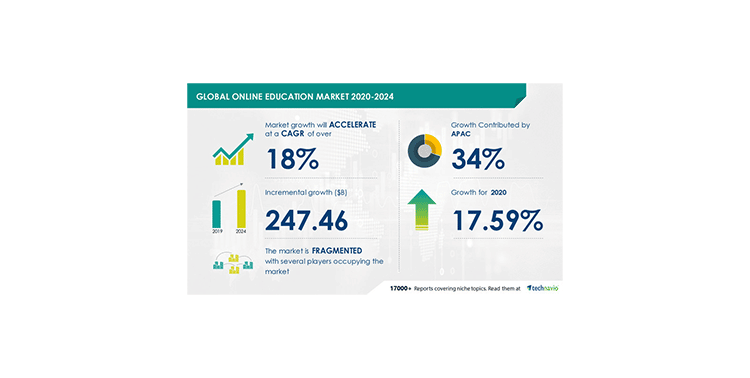
The size of the market is yet another factor to consider when trying to determine how much you can make selling online courses.
The market size, also known as the serviceable addressable market, or SAM, refers to the total number of potential customers your online course has within a given market.
It gives you an idea of the maximum revenue you might generate by selling your product to those customers.
This way, you’ll have an accurate measure of your online course business’s potential for growth.
There are many different ways to determine the market size, but as a beginner, a simple strategy (like the one outlined below) will serve you well.
How to Assess Market Size for Your Online Course
Before we look at the steps for assessing the market size, it’s important to note that there are two methods you could use to find your market size.
Top-Down Method: This approach includes looking at the “relevant” market size (with regard to your product or service) and then calculating how much your business might earn from it.
Bottom-Up Method: This method includes completing your own market research in order to gain a more accurate and realistic market size for your product.
To use this approach, simply follow these steps:
1. Define Your Target Market
Start with your total addressable market (TAM). Use that to figure out your ideal market within that number. Keep in mind that it varies according to logistical factors, such as geography. You can use industry databases and other publicly available sources to help you quantify your target market.
2. Conduct Market Research
Your next step is to use market research to estimate (realistic) interest in your product. You need to estimate the number of people that might purchase your product using market research techniques, such as assessing businesses that target the same group of buyers. Find out their market share, annual sales, etc., for similar products or services.
3. Calculate Potential Sales
The final step is to calculate potential sales. Now that you have a realistic figure representing how popular your offer could be in the market, you can use this data to determine whether or not it’s worth investing your time and money into creating that product or service.
Competition
Competitors influence sales by decreasing market share and shrinking the available customer base, particularly when demand is limited.
Competitive markets in the eLearning industry often force lower prices, and this is something to consider if you want an accurate estimate of how much you stand to make from your online course.
You might feel pressured to lower your prices to beat your competition, but the good news is that there are many ways to stay competitive without eating into your profit margins.
One way to do so is by raising your price and value proposition.
So, if your most successful competitor is selling their course for $500, instead of pricing yours at $490 as a way to lure potential customers to your course (and risk starting a price war), rather increase your price and raise the bar higher with regard to value.
Besides, in the eyes of your customers, a lower price equates to lower-quality content.
To help you implement this strategy successfully, it’s a good idea to enroll in your competitors’ courses and find out what can be improved upon.
If you can offer more value to your students, it will certainly justify a higher price. Just make sure that you clearly communicate the value you’re offering.
Pro Tip: Niche Further Down
This is another effective tactic to beat your competition. If your niche is super crowded, it could be because your topic is too broad. Niching down will help you get ahead of your competition.
For instance, if you are selling an online course on “How to start a profitable online business”, not only is this an extremely popular niche, but the topic is also way too general, which means there’ll be thousands of similar courses all over the internet.
However, if you can narrow your niche down further, and focus on, say, “How to Get Your First Affiliate Sale in Just 7 Days”, a course like that would target a subtopic of the larger market, making it more likely that you’ll get higher conversions.
Course Quality
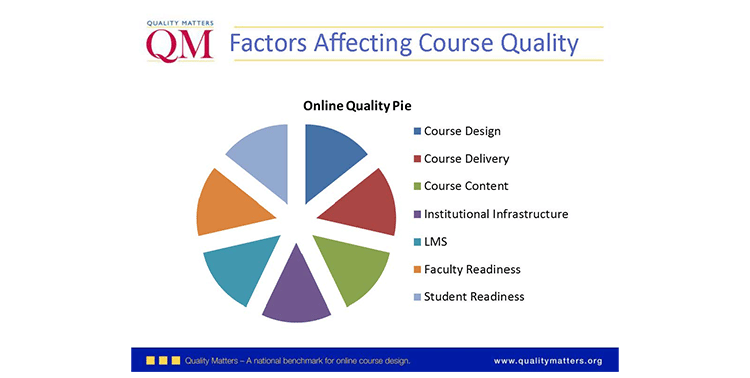
The quality of your course will also play a part in determining how much you make from it. Of course, as a course creator, you should strive to always offer high-quality content. But, some types of content are perceived to have higher value than others.
Depending on the topic, even a factor like content length can be seen as a measure of the quality of a course.
Another factor to consider is whether or not your course leads to a professional certificate or professional education credits. This is easy to do if you’re using an online course platform, but can be more difficult if you host courses on your own website using a platform like Learndash.
From production quality to branding and instructor credibility – all these things come together to influence your students’ perception of your course.
Marketing Expenses
As previously mentioned, your expenses factor into how much you charge for your course, which also impacts how much you stand to make from sales. Marketing will likely be one of the largest expenses you have, especially while you’re still working on your SEO (search engine optimization) content marketing strategy. However, it’s a crucial component if you want to make money selling online courses.
While on the subject of marketing expenses, it’s also important to consider your own level of marketing or sales experience as this will determine how effectively you bring your course in front of your target audience.
For instance, do you already have an online business, or have you sold digital products before?
If so, then you’re at an advantage and will obviously have an easier time selling your online course than if you’re a beginner. You can expect a higher conversion rate which means more revenue for your business.
Speaking of revenue and income…
Most people use the two terms interchangeably. But, as a course creator, it’s important for you to understand that the two are different. Revenue is the total income a business generates, while income refers to the amount of profit left over after paying off all expenses and debts.
You’ll find this especially helpful when it comes to setting income targets and expectations from your course sales.
Here is an easy way to calculate your revenue and income so you can get a clear idea of the income target to set for your online course.
How to Calculate Online Course Revenue:
Audience Size x Conversion Rate x Price of your Course
Example:
2,500 people on an email list x 2.0% conversion x $247 per course sold = $12,350 in course revenue
How to Calculate Online Course Profit
Revenue – Expenses and Debts (including labor, materials, and overhead costs)
Example:
$12,350 in revenue – $3500 for editing/shooting/scripting = $8,850 in total profit
How Big is the Problem You’re Solving?
It goes without saying that if you want to get more people to buy your course, you must ensure that it is centered around a result.
But, it’s worth considering how big the problem is that you’re solving.
If people don’t feel an urgent need to get the result, it’s unlikely you’ll have an easy time convincing them to sign up for your course.
Remember that people don’t want to buy online courses: they want to buy a result, a change or a transformation in their lives.
Whether your ideal client wants to:
- Lose 10 pounds;
- Learn how to make pizza at home;
- Become an expert in digital marketing; or
- Make more money online.
You need to make sure that you are clearly communicating what kind of result your course is going to provide and how it will make an impact/change in the user’s life.
Chances are that many of your competitors are not offering a clear result to their audience, or maybe their marketing copy is not reflecting this hard enough.
In any case, it is essential that you specify what your students are going to achieve once they complete your online course. This will significantly increase your conversion rate and place you one step ahead of competitors who are not doing it correctly and will eventually enable you to make money selling online courses.
Conclusion
I hope this article has answered your question of ‘how much can you make selling online courses.
As you’ve seen, there are many different factors at work when determining how much profits you stand to make from selling your own online course.
This number can vary wildly. You could earn a few hundred dollars a year or a seven-figure income – it all depends on the abovementioned factors.
Understanding the different factors that have an impact on your success can help position you for success, now and in the future. Is selling online courses profitable? Yes, but you need to stay on top of the game at all times.
